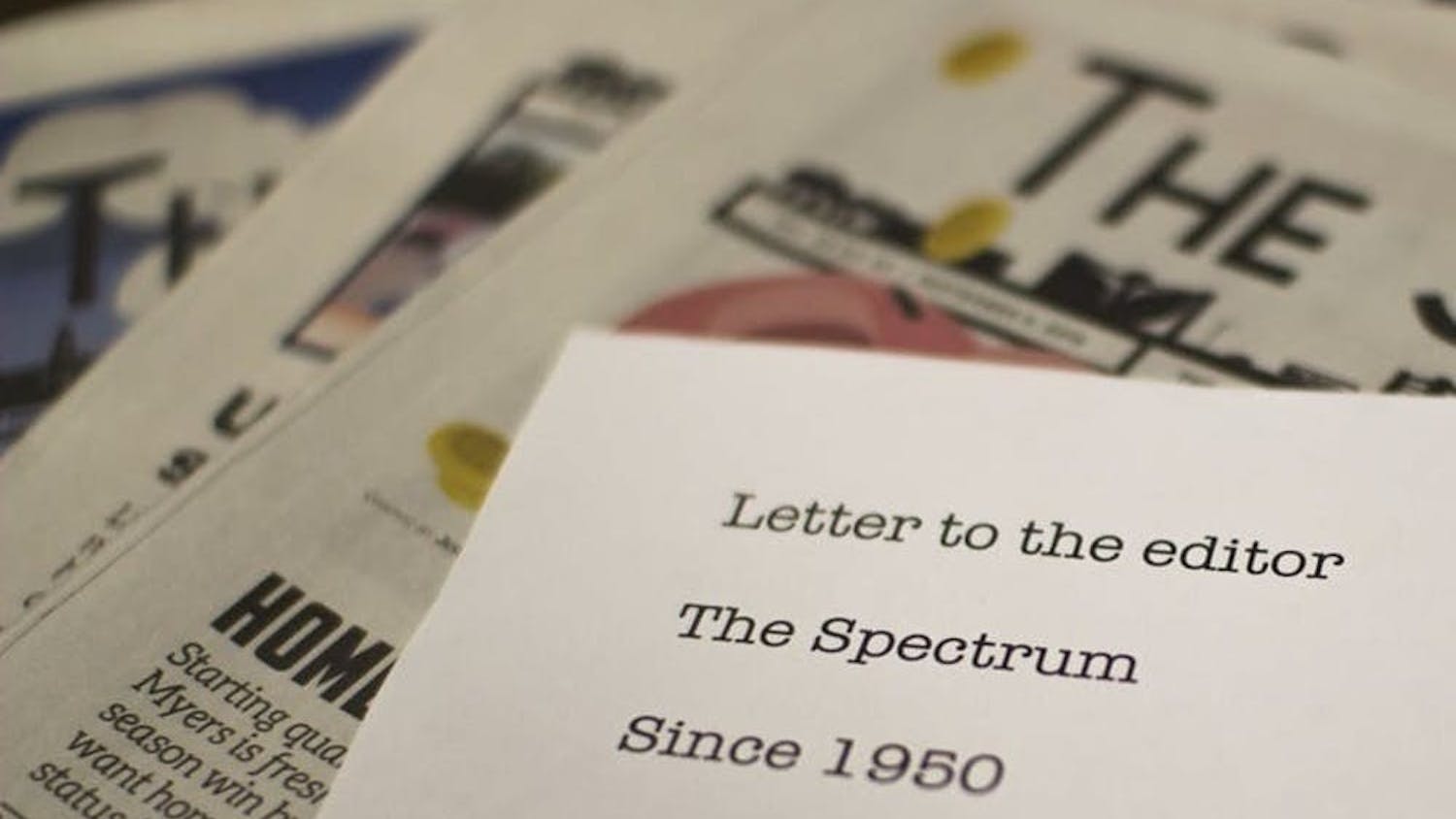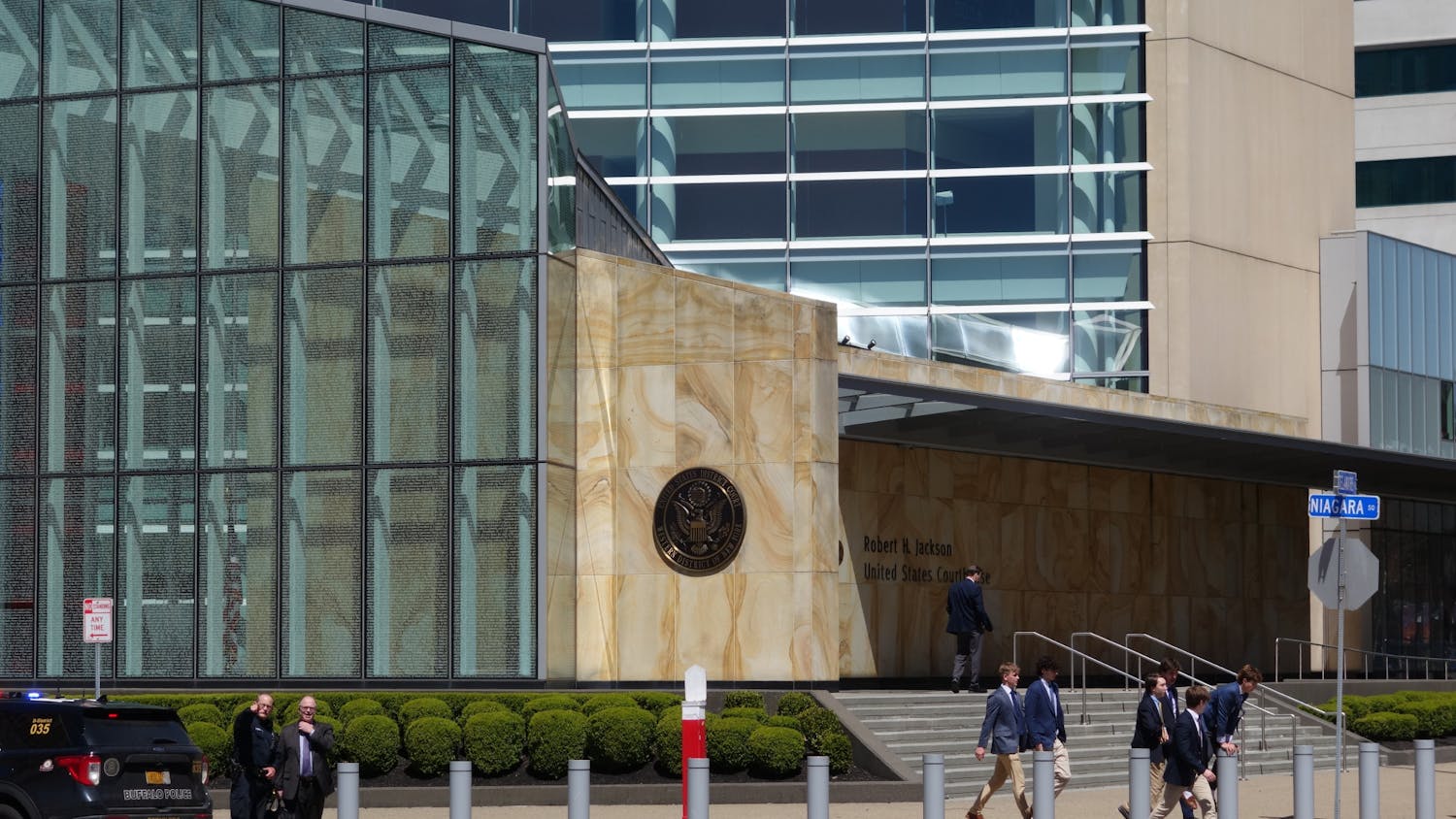John King won’t officially become SUNY chancellor until Jan. 17, but he kicked off his statewide tour of every SUNY campus with his visit to UB on Friday.
King toured UB’s North Campus alongside UB President Satish Tripathi, visiting the Level Up center, the Buffalo Room, the Distributed Robotics and Networked Embedded Sensing (DRONES) lab, and Spot, the robot dog – at the center of many of the lab’s experiences. He concluded his visit by meeting a few selected students and faculty to discuss what changes he envisions implementing into the SUNY education system.
King has a long career in education administration. He previously served as the New York State education commissioner, president of the Education Trust and in former President Barack Obama’s cabinet as the 10th U.S. Secretary of Education from 2016 to 2017.
King, 48, most recently ran for governor of Maryland in the 2022 Democratic primary. He placed sixth with 3.7% of the vote, ultimately losing to author and investment banker Wes Moore.
The newest SUNY Chancellor sat down with The Spectrum to discuss his aspirations for SUNY on Thursday:
The Spectrum: What are some goals you would like to achieve while holding this position?
John King: “Part of what drew me to the job is the governor’s commitment to make SUNY the best public higher education system in the country. To do that, we have to grow our investment in research and scholarship across the SUNY system. We have to make sure that students have a great experience on every campus. That means we have to keep SUNY affordable, but it also means we have to make sure that students get great academic experiences with strong and diverse faculty. Students need to have a good campus experience with extracurricular activities and access to mental health support. We’ve got to work to make sure we advance diversity, equity and inclusion across the system. We want SUNY students to be reflective of the diversity of our state. We want the SUNY faculty, staff and campus leadership to be reflective of the state, and we want everyone to understand that diversity and excellence go together.”
TS: In the SUNY education system, 54% of enrolled students are white, 14% are Hispanic/Latino and 10% of students are African American. What are your plans for increasing student diversity and inclusion in the SUNY education system?
JK: “We’ve got to do a better job recruiting a diverse student population. We’ve got to reach out to communities that have historically been underserved and make sure that folks know about the great value proposition that SUNY represents. We’ve got to make sure that we reach out to high schools so they’re sharing information with the students. One of the things that we’re talking about doing is partnering with school districts to make sure that every high school senior gets an individualized letter from SUNY saying there is a place for them at their local community college. We’re also working to set up a system, where, if students don’t get into their first-choice school, we send them a letter saying, ‘Here’s another option for you,’ with a program that aligns with what they’re interested in. We want to make sure every student in the state knows there’s a place for them at SUNY, and that’s going to help us build their diversity.
“We also need to diversify our faculty because we have to make all of our campuses places where students of color, first-generation students and immigrant students feel like they belong. And part of that is seeing yourself represented in the faculty. We don’t have enough Black and Latino faculty today. We have work to do to recruit faculty members, and that means we need graduate students who are diverse. We need to support their research so they can become the next generation of diverse faculty.”
TS: For the past 10 years, state funding for SUNY schools has gone down or plateaued. Do you have any plans to work with the governor to increase state funding for SUNY schools?
JK: “So the good news is, last year, the governor and the state legislature really put additional resources towards SUNY, breaking that pattern of flat funding, including investing in TAP (the tuition assistance program) for part-time students, so that was a really important step forward. The governor, in the policy book for her address of the state this week, talked about additional investments, including a $500 million endowment fund that will help Stony Brook and UB raise a billion dollars in philanthropy, all to invest in things like research and quality learning experiences for students. The governor also talked about investing in innovation across the campuses to improve student outcomes, like completion. That’s something that’s very important to me. I worry a lot about students who start and don’t finish [college], end up sometimes with debt and no degree, and then struggle to get their lives on track and struggle to get the kinds of professional opportunities they want.”
TS: What are your opinions on the governor’s announcement that students’ tuition will increase? And what are your long-term goals for this tuition increase?
JK: “One of the things I’m very proud of about the SUNY system is how affordable it is. SUNY is one of the most affordable public higher education options in the country. Fifty-three percent of SUNY four-year students go tuition-free now, between PELL, TAP and Excelsior. Those students are going tuition-free and still will, even with this modest change in tuition – it wouldn’t affect them. That means that families that are making less than $125,000 won’t see any change in tuition. But, this modest increase in tuition which will equal a little over $200 a year, will allow the institutions to continue to recruit great faculty, to provide quality services for students and to enhance the services for students. The governor also talked about flexibility for the four university centers, so that they can compete effectively with flagships in other states.”
TS: What is a piece of advice you would give to college students?
JK: “It’s hard to choose just one, so I’ll say two. One is to try to take courses that maybe are outside of your major, that are in a subject area that you’re just curious about. Something that will just kind of give you the opportunity to be exposed to something totally different. I studied government as an undergraduate, so I took a lot of classes that were about public policy and sociology, history and law. But I also took a class in astrophysics, and it was really interesting. I didn’t expect to become an astrophysicist. I was just interested in learning about it, and it was a great opportunity to be exposed to a new area. So that’s one tip. Two is: take advantage of opportunities to do internships, to do job shadows and informational interviews. Think about how you can assess the different options that will be available to you after college by making sure that during college you’re getting exposed to the world beforehand.”
Victoria Hill is an assistant news editor and can be reached at victoria.hill@ubspectrum.com





